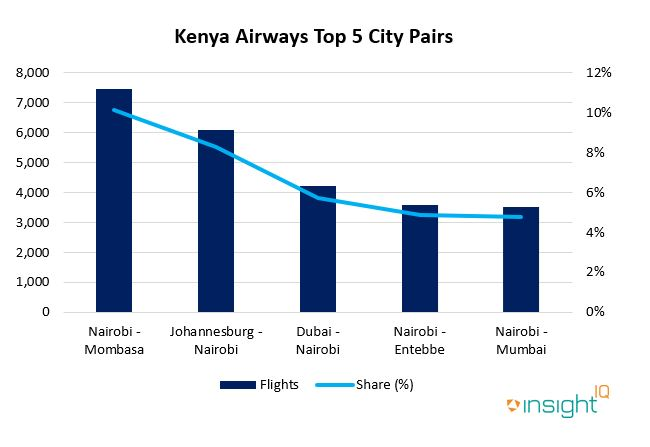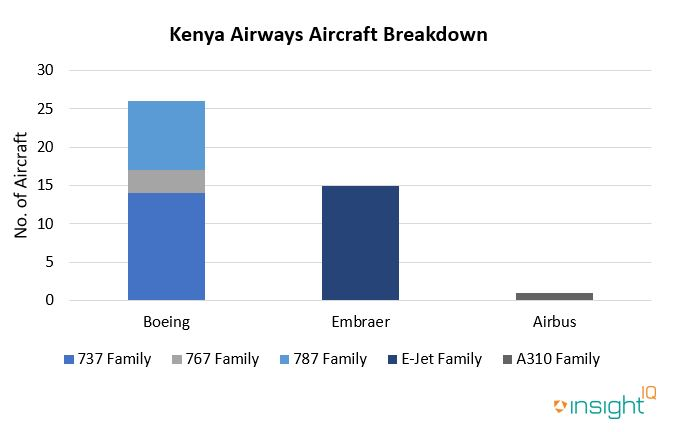28/10/2021
We used InsightIQ to look at the Kenya Airways fleet, and CO2 emissions trends on flights between London and Nairobi.
Image credit: Frans Berkelaar
British Airways is to begin a codeshare operation with Kenya Airways following the recent resumption of passenger flights between London and Nairobi.
The UK and Kenyan flag carriers will soon share their codes on operations between London Heathrow and Nairobi, representing 20 African and 26 UK and European destinations respectively. Kenya Airways is a member of the SkyTeam airline alliance, and also has a codeshare arrangement with Air France-KLM. British Airways is a member of the Oneworld alliance.

According to fleet data from InsightIQ, Kenya Airways has an active fleet of 29 aircraft, with a total of 37 aircraft in service. The oldest passenger aircraft in the active fleet is a 13.25-year-old Boeing 737-800, registered at 5Y-KYD. The youngest active aircraft is also a 737-800, built in November 2015 and registered 5Y-CYE. The average age of the Kenya Airways fleet is 10.1 years.

According to data from our aviation Carbon Emissions Calculator, direct flights from London Heathrow to Nairobi operated by Kenya Airways in 2019 using a Boeing 787-8 produced 91,500 tonnes of CO2. This equated to an average of 146.7 grams of CO2 per-seat per-mile. Total CO2 output from these flights reduced by 30,800 tonnes in 2020, almost exactly in line with a 33.7% reduction in total flights on the route.
Looking at the fleet overall, the Boeing 737-800 is the most efficient aircraft per-seat per-mile, though this should be viewed in context of the higher capacity and range of the Boeing 787-8.
.png)
At present, Kenya Airways are the only operator of direct flights between London and Nairobi. Connecting flights are available with other operators including KLM and Qatar Airways via Amsterdam and Doha respectively.
IBA's InsightIQ analysis platform flexibly illustrates multiple asset, fleet and market positions, actual and potential, to inform client choices and identify acquisition opportunities. Immediate access to crucial aircraft, engine, lease rate and fleet data eases appreciation of historic and future aircraft concentrations and operator profiles.